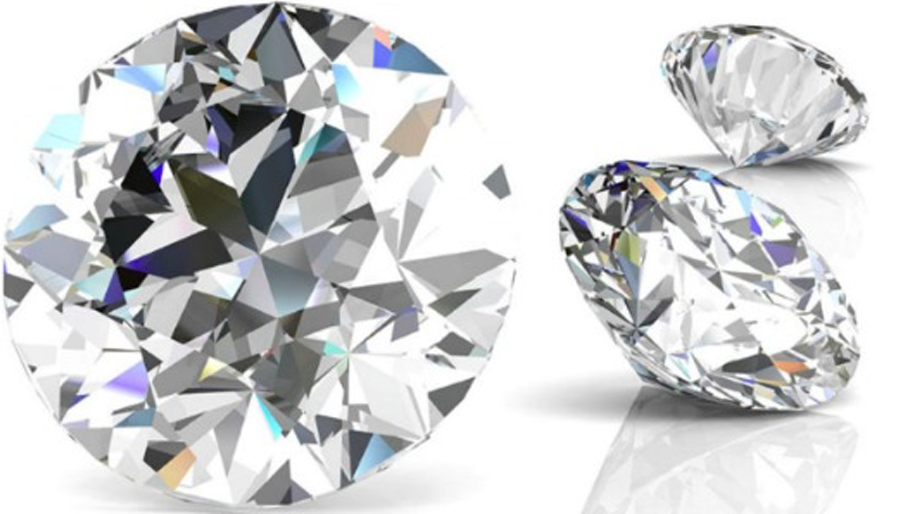Using the Melee Market to your Advantage
Getting to know the Melee Market
Diamonds have been ‘traded’ for hundreds of years. In the early days, transactions were informal and not influenced by anything other than the buyer’s desire for the stone. However, industry stakeholders quickly realized that there was money to be made as the buying and selling of diamonds became more formalized and frequent. This realization resulted in the formation of the global diamond market, as it’s known today.
On a broad scale, the global diamond market accounts for the trade of all diamonds, everything from top top quality to industrial quality diamond material used to produce tools and equipment. This article will examine a specific sector of the diamond trade, known as the melee market. The term “melee” refers to diamonds less than 0.20ct in weight, typically seen in jewelry pieces such as engagement rings, wedding bands, tennis bracelets, and fashion jewelry. Any stones used in jewelry aside from the ‘center stone’ are known as ‘melee’.
Below is an example of melee set in jewelry:
| wedding bands | fashion necklace |
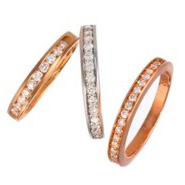 |
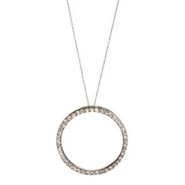 |
The Importance of Demand
As you already know, demand drives supply and supply determines demand. To understand the melee market one should monitor and track demand. Melee values can be volatile and are can be directly impacted by the following: supply, or lack there of, changing jewelry and consumer trends, manufacturing shifts, swings in the prices of larger single stones, and economic factors such as currency, economical and political changes.
How to Recognize/Predict a Melee Market Upswing
1. Be aware of political and economical movements. These changes can often symbolize the rise or fall of wealth and interest in high-end luxury goods, such as diamonds. A prime example of this occurrence has been displayed over the past decade, when the demand for diamonds has notably increased in emerging markets, such as China, India, and the Middle East, where populations and consumer spending has risen rapidly in a short period of time. As a result of increasing consumption, the diamond market saw significant supply shortages as a result of rising demand.
The majority of the melee available on the US market originates abroad. It is mined and the rough is cut and polished in either India or China and then re-exported to markets around the globe. International factors can have very real repercussion for the melee market. Issues such as the liquidity crunch in India in 2016 and the collapse of the Russian ruble in late 2014 have had serious impacts on the diamond market, particularly melee. It’s important to understand the close connection between diamonds and the global economy and keep and eye on economic shifts that affect consumer spending, currencies, and cash flow.
2. Shifts in jewelry trends may indicate an upswing in melee demand. As jewelry trends have come and gone over many decades, the demand for specific types of melee has followed. Keep an eye on advertisements from big chain jewelry stores and within major consumer publications, which both provide valuable clues on what’s trending in jewelry designs. These mainstream organizations ultimately influence consumers, driving demand up. Certain jewelry style, such as stackable items, pieces with micro-pave work, or tennis bracelets use an abundance of melee. As they gain or wane in popularity the specific melee used in the pieces also fluctuates as demand grows and supply shrinks.
Below are examples of jewelry styles that have experienced short-lived popularity. During their peak of popularity the melee market behind them experienced heightened melee demand and value:
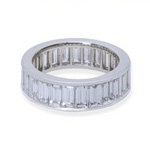 |
1980S: BABY BAGUETTE DIAMONDS
Baguettes were very popular in the 1908s, both in jewelry and in manufacturing. This drove the price per carat up while these diamonds were in demand. Since then, the price has fallen considerably to a level about one fifth of what it once was. And, you can expect that at some point, for some as yet unknown reason, the demand and the price will rise again. |
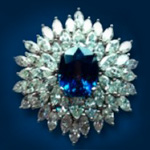 |
1990S: CLUSTER RINGS
Cluster rings were very popular for a time, causing increased demand for small pave diamonds. Then, the fashion tides shifted again and three-stone rings and pendants were what everyone wanted, so the larger stones jumped in value. |
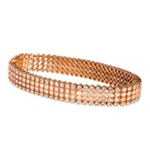 |
LATE 1990S – EARLY 2000S: TENNIS BRACELETS
Once the height of fashion, tennis bracelets similarly caused a spike in the value of melee. As their desirability has waned, it is no longer one of the forces affecting the melee market. |
3. Rely on market experts when it comes to buying and selling melee. The melee market can be elusive and hard to understand as it’s not tracked and indexed the same way that single stones are, with pricing readily available to the trade on RapNet. There is no commonly adopted melee price sheet in circulation and even if there was, it would always be subject to change given factors such as trend shifts and economic conditions. Contact Melee on Demand at melee@whitepinediamonds.com to speak to a melee expert – We would be happy to help you understand the current melee market and how to buy and sell melee effectively.

Authored by
MYLES SCHAKLER
VP, DIAMOND SALES


